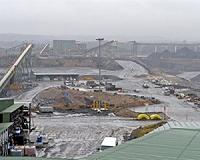 |
Madison WI (SPX) Aug 03, 2010 Scientists demonstrate that biochar, a type charcoal applied to soils in order to capture and store carbon, can reduce emissions of nitrous oxide, a potent greenhouse gas, and inorganic nitrogen runoff from agriculture settings. The finding will help develop strategies and technologies to reduce soil nitrous oxide emissions and reduce agriculture's influence on climate change. A research team led by Bhupinder Pal Singh from Industry and Investment New South Wales and Balwant Singh from the University of Sydney, tested the effects of four types of biochar on nitrous oxide emission and nitrogen leaching from two different soil varieties. Their results are reported in the July-August 2010 Journal of Environmental Quality, published by the American Society of Agronomy, the Crop Science Society of America, and the Soil Science Society of America. The study revealed for the first time that interactions between biochar and soil that occur over time are important when assessing the influence of biochar on nitrogen losses from soil. The scientists subjected soils samples to three wetting-drying cycles, to simulate a range of soil moistures during the five-month study period, and measured nitrous oxide emissions and nitrogen runoff. Initially, biochar application produced inconsistent effects. Several early samples produced greater nitrous oxide emissions and nitrate leaching than the control samples. However, during the third wetting-drying cycle, four months after biochar application, all biochars reduced nitrous oxide emissions by up to 73%, and reduced ammonium leaching by up to 94%. The researchers suggest that reductions in nitrous oxide emissions and nitrogen leaching over time were due to "ageing" of the biochars in soil. "The impacts of biochars on nitrous oxide emissions from soil are of interest because even small reductions in nitrous oxide emissions can considerably enhance the greenhouse mitigation value of biochar, which is already proven to be a highly stable carbon pool in the soil environment," according to senior author Bhupinder Pal Singh. "This research highlights that impacts of biochar on nitrogen transformations in soil may change over time and hence stresses the need for long-term studies to assess biochar's potential to reduce nitrogen losses from soil." In addition to the three wet-dry cycles, the soil samples also received glucose and nutrient applications to supply of carbon and inorganic nutrients for optimal microbial activity. The research team tested biochar from two different sources, wood waste and poultry litter. Biochar is made when organic material is burned at high temperatures in the absence of oxygen. Research is on-going at Industry and Investment NSW to investigate the causes of the reductions in nitrous oxide emissions by biochars, especially under field conditions, and to determine optimal rate and timing of biochar and fertiliser applications to agricultural soils to maximize the greenhouse mitigation value of biochar. This study was funded by the New South Wales Department of Environment, Climate Change and Water, and the biochars were supplied by Pacific Pyrolysis (previously known as Best Energies, Australia).
Share This Article With Planet Earth
Related Links American Society of Agronomy (ASA) Farming Today - Suppliers and Technology
 Mines and wines in Australia climate battle
Mines and wines in Australia climate battleMuswellbrook, Australia (AFP) Aug 1, 2010 Australian winemaker Brett Keating doesn't draw a parallel between the shorter, hotter seasons and slow creep of coal mining towards his land, but he is concerned. "This is a community that's benefited greatly from mining over the years, it's brought a lot of prosperity to the area," he explains. "We've coexisted with mining for years but in the last couple of years we just feel like the ... read more |
|
| The content herein, unless otherwise known to be public domain, are Copyright 1995-2010 - SpaceDaily. AFP and UPI Wire Stories are copyright Agence France-Presse and United Press International. ESA Portal Reports are copyright European Space Agency. All NASA sourced material is public domain. Additional copyrights may apply in whole or part to other bona fide parties. Advertising does not imply endorsement,agreement or approval of any opinions, statements or information provided by SpaceDaily on any Web page published or hosted by SpaceDaily. Privacy Statement |